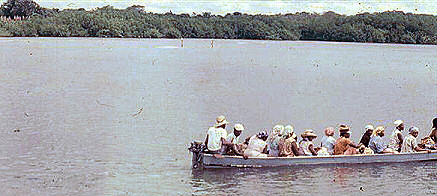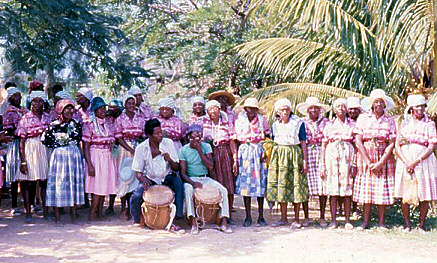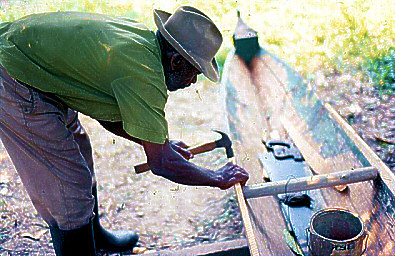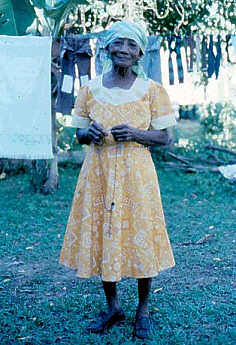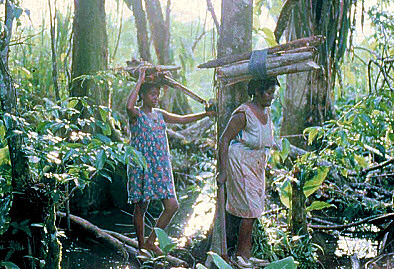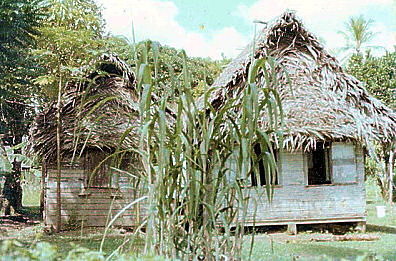






BELIZE
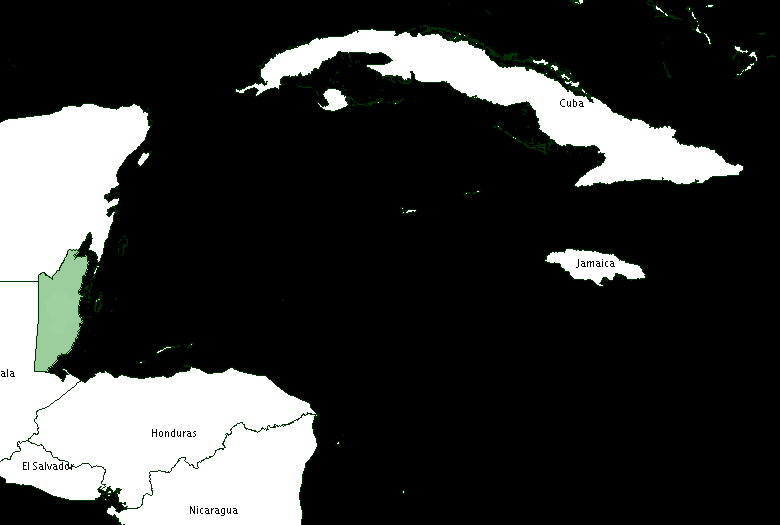
Indigenous Resurgence in the Contemporary Caribbean: Amerindian Survival and Revival. Edited by Maximilian C. Forte. Published by Peter Lang, New York, 2006
Contributor: Joseph O. Palacio, a Belizean Garifuna, recently retired (2004) from the University of the West Indies, where he served as Resident Tutor, reaching the level of Senior Lecturer. His main responsibility was designing and implementing several continuing studies programs as well as fielding degree-level programs originating from the University. In 1982 he received his doctorate in Social Anthropology from the University of California at Berkeley with a focus on the Caribbean/Central American subregion, food studies, and development. During his tenure at the University of the West Indies he did research on indigenous peoples, migration, and rural community development. He has published several articles and monographs on these topics in Belize and within the Caribbean and Central America. In 2005, The Garifuna, A Nation Across Borders: Essays in Social Anthropology, a volume edited by Palacio, was published by CUBOLA, Belize.
Chapter: Chapter Nine. Cultural Identity among Rural Garifuna Migrants in Belize City, Belize
Abstract:
A survey of sixty household heads of Garifuna migrants living in Belize City reveals continuity of practices, social ties and identifications they brought from the village, as well as some changes in their cultural identity, induced by the urban social setting. There is a backdrop for the survey in terms of the prolonged migratory tradition of the Garifuna and significant pre-independence cultural transformations overtaking Belize, and especially felt in Belize City. There is an analysis of the significance of rural/urban transition on identity and, more particularly, on the cultural identity of the Garifuna as indigenous people. (See photo gallery below for images related to this research project)Chapter: Chapter Eleven. Looking at Ourselves in the Mirror: The Caribbean Organization of Indigenous Peoples (COIP)
Abstract:
In 1988-89 a series of events took place in various territories of CARICOM gradually climaxing in a seminal gathering in St. Vincent that led to the birth of the Caribbean Organization of Indigenous Peoples (COIP). It was the fist time after the first peoples of the subregion had roamed with ease from one part to the other that their descendants met on their own terms to discuss matters of mutual importance. Those of us at the gathering could not believe our eyes and senses when we met, shook hands, hugged, and cried with each other—so happy were we about this once in a lifetime opportunity. The event was a mirror where we saw ourselves for the first time. This article will trace the beginning and trajectory of the COIP—the inspiration for its formation, the gathering at St. Vincent, setting up the Secretariat in Belize, the main achievements of the Secretariat and its difficulties, and the demise of the Secretariat and ultimately the COIP in the 1990s. The other spotlight on the COIP as a mirror will take the form of a reflective exercise in which I will engage as the Coordinator of the Secretariat. It will be my observations as a Garifuna academic-cum-activist on my role—how I became the Coordinator; my efforts to insert the Caribbean within the hemispheric wide movement of Indigenous Peoples; and the several structural problems that plagued the COIP constituents from taking off. The latter include economic poverty, representativity, the interminable squabbles among indigenous peoples within some countries, and the difficulty to see beyond the horizon at any moment. But the biggest difficulty, I think, was the unease that persons felt about themselves as indigenous peoples. Inevitably this led to the fruitless question of who was more indigenous than the other. Ironically, this was the legacy of colonialism playing a cruel game on the people who had lost their very being to enable the colonial settlers to strive and impose their racist ideology throughout the Caribbean. The paper will end with lessons learned from the COIP on the formation of organizations within the Caribbean to participate in the world indigenous peoples movement. This is important as we come to the end of the UN Declared decade of Indigenous Peoples in 2005.Photo Gallery by Joseph Palacio
This picture shows the only mode of travel for the Barranco villagers before the road was opened in the late 1980s.
Women posing for a photograph during Christmas festivities in Dangriga 1979
A man repairing his fishing dory Barranco 1979
An older woman posing in her Sunday dress with her rosary in Barranco 1979
An older couple in Barranco 1979
This shows women coming from their bush gardens with firewood in the village of Barranco in 1979
A lot with houses in Barranco 1979Websites on the Garifuna:
“Dangriga BZ or USA?: Out-migration experiences of a Garifuna community in post-independent Belize,” by Myrtle Palacio, from the UWI Belize Country Conference: excerpt—“Studies on ethnicity and migration on the Garifuna have been conducted by two scholars, J. Palacio (1992) and N. Gonzalez (1986). While Palacio has primarily investigated the attempts of self-improvement of the Garifuna people in Los Angeles, Gonzalez has studied the rebirth of the Garifuna in New York. In both cases, the point of departure was the ‘idealized’ viewpoint of the Garifuna as rural people. This study shows that within seven generations, the Garifuna are now urban people, having emigrated permanently from their rural coastal communities to inner city America. To embrace ‘American’ cultural traits, they have discarded traditional Garifuna cultural traits.”
Feature Address, Symposia in Connection with the Second Gathering of Indigenous Peoples of the Caribbean, August 29 To September 5, 1993, by Joseph Palacio (Resident Tutor, U.W.I., Belize): “…The Amerindian peoples that are today found in our countries are the result of such mixtures either among the Amerindians themselves and/or with other races. It certainly does not mean being 'pure' as we are all mixed biologically as well as culturally. It does mean that we have taken a conscious decision to portray the Amerindian part of us, a part that remains pervasive among thousands of people in the Caribbean but has deliberately been laid to rest over the years as something insignificant….”
Interview with Joseph Palacio, The CAC Review
Interview with Joseph Palacio, La Buga Livingston website.“The Garifuna: Weaving a Future from a Tangled Past”, by Susie Post Rust, in National Geographic magazine: “This year, for the first time, the United Nations gave to a group of endangered cultures the title Masterpieces of the Oral and Intangible Heritage of Humanity (referred to in the article as World Heritage cultures). Included are the Garífuna of Central America, whose uniquely fused African and South American ancestry and culture gave rise to new traditions. Inhabiting coastal regions along the Caribbean, the Garífuna can be found in Belize, Guatemala, Honduras, and Nicaragua. The Garífuna were selected because of the vibrancy of their language, music, and dance…”
The Garifuna Peoples of Honduras: a detailed site featuring the geography, history, visual arts, dance, music, customs, women, and current events of the Garifuna—“Did you know that 90-100,000 Garinagu live in the United States? Were you aware that this number nearly equals the Garífuna population in Honduras - the largest concentration in Central America?”
GARINET: Garifuna international Web information resource
La Buga, Livingston: A large resource consisting of essays, reports, news, poems, photographs and videos about the Garifuna at home and abroad.
